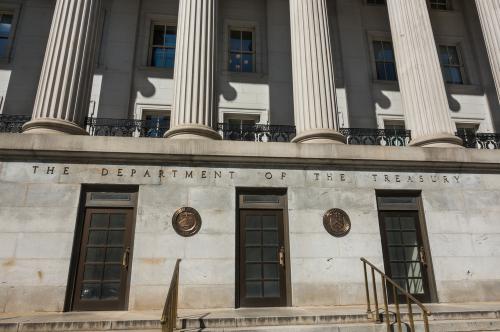INTRODUCTION
There is a strong consensus that reform of the financial regulatory system must include significant increases in the capital requirements for banks. All else equal, this should make the banks safer by providing a greater cushion to survive the mistakes and accidents from which they inevitably suffer. Higher capital requirements should also discourage transactions of lower economic value by creating a higher hurdle rate, since the extra units of capital need to be paid for by additional expected return. Some of the regrettable transactions that seemed attractive during the bubble might not have been undertaken at a higher hurdle rate.
Unfortunately, higher capital requirements are not free. At the margin, the increased hurdle rates are likely to: make it harder for businesses and individuals to obtain loans, raise the cost of loans, lower the interest rates offered to depositors and other suppliers of funds, and reduce the market value of the common stock of existing banks. One of the keys to determining the exact right size for an increase in minimum capital levels is to quantify these effects.
SUMMARY
The analysis presented here strongly suggests that the U.S. banking industry could adjust to higher capital requirements on loans through a combination of actions that would not wreak havoc on the system. Not surprisingly, the adjustments would need to come from a set of actions, since the rebalancing appears tough to achieve with any single move. Fortunately, the banks do have a variety of levers to pull which should allow them to make the transition.
These findings imply that there would likely be relatively small changes in loan volumes by U.S. banks as a result of higher capital requirements on loans retained on the banks’ balance sheets. The various actions required to restore an acceptable return on common equity appear unlikely to be large enough,even in the aggregate, to significantly discourage customers from borrowing or move them to other credit suppliers in a major way.
These findings may seem counterintuitive given the large percentage increase in required common equity devoted to lending considered here and the strong focus of bank managements on rationing that common equity. Three points may help clarify the results. First, banks are highly levered institutions – the great bulk of the funding for a loan comes from deposits and debt. Even though common equity is expensive, it accounts for less than a fifth of the cost of a typical loan. Second, higher equity levels reduce the risk of a bank and therefore lower the returns demanded by debt and equity investors, reducing the cost of each dollar of debt or equity supporting the loans. Third, as shown in detail below, reasonable actions by the banks can restore returns on equity to levels that are attractive to investors. Thus, there should be the ability for banks over time to raise new equity sufficient to maintain their loan volumes. It is true that large amounts of capital would need to be raised, but this appears quite feasible given a reasonable phase-in of the new rules. A four percentage point increase in the level of common equity as a percentage of the roughly $7.5 trillion of loans in the U.S. banking system would require about $300 billion of new equity. This would represent approximately a 20% increase in the existing $1.4 trillion of equity. Put another way, this could be obtained by retaining roughly two years worth of the system’s earnings, assuming even a 10% ROE for the banks as a whole. In practice, a mixture of capital raising and earnings retention would likely provide the needed capital.
A forthcoming paper will examine the extent to which competitive pressures from other financial intermediaries and classes of investors would change these conclusions. However, the fuller competitive analysis is unlikely to alter the conclusion that the volume and pricing of bank lending would not be affected in a large way. The required adjustments to restore an acceptable return on equity are simply too small, in the author’s opinion, to create a large degree of change.
The Brookings Institution is committed to quality, independence, and impact.
We are supported by a diverse array of funders. In line with our values and policies, each Brookings publication represents the sole views of its author(s).


